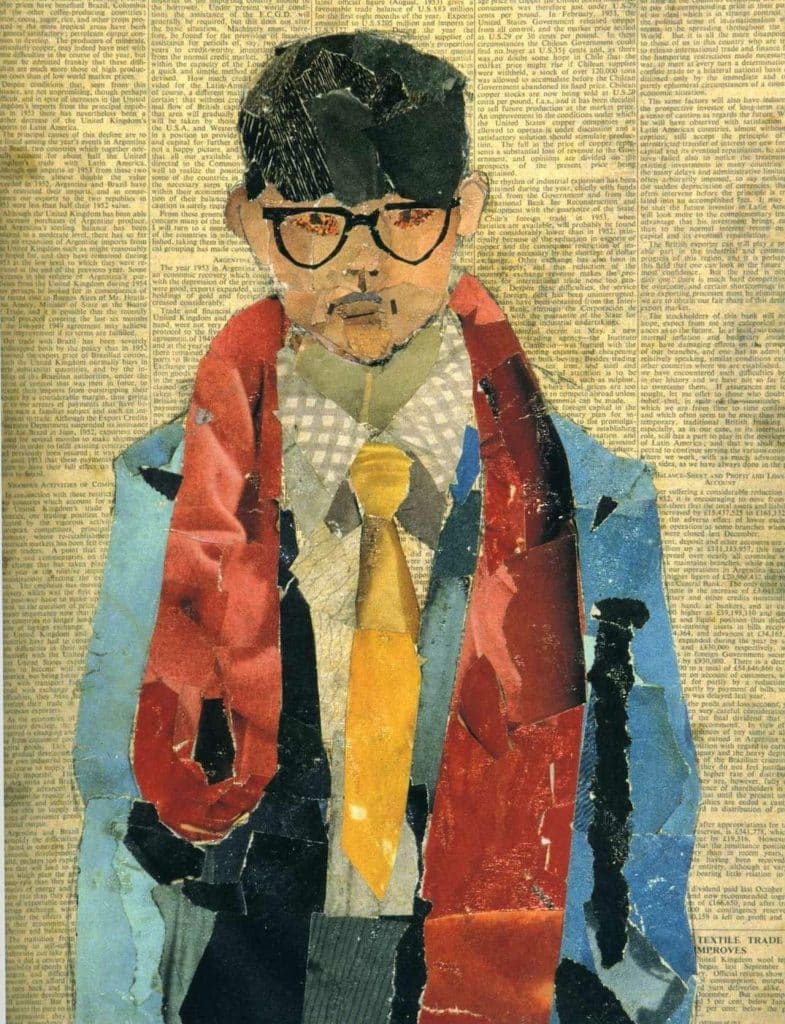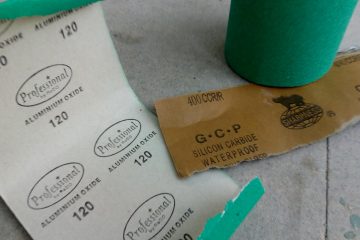
Collage is a great way to work at home. All kinds of paper can be used including newsprint, as in this self-portrait by David Hockney. The article in the piece serves to locate the work in a time and place and adds a layer of meaning to the picture.
The work started as a drawing on the newsprint. Some of the outline is still visible in places. It acted as a guide to the placing of further layers of paper. There are painterly qualities where different shades of colour and black paper are used to give the impression of light falling and a feeling of three-dimensions to the work. The collar has had painted lines added to give a sense of form. Look at the section of shirt to the right. The newsprint has been left as it is a good match for the tone and pattern of the shirt. Seen close up the neck and ear on the left are less worked that other areas but as part of a whole read well. The background is neutral compared to the blocks of colour used for the figure.
Hockney’s work succeeds because of the balance between playfulness and the use of formal considerations such as tone, pattern and colour. Glue can be useful to produce a finished piece of work but beginning by rearranging papers and making alterations can be a good way to work. Almost like having an eraser for drawing many possibilities can be considered.
This work is part of a permanent exhibition at the Cartwright Hall Gallery in Lister Park, Bradford. It includes insights into Hockney’s working methods, including his use of the camera both as a sketchbook and a diary. Seeing a photograph of work in progress and at the finished stage is a useful tool in assessing its success.
Hockney also made collages from photographs known as Photomontage. “My Mother” is a good example. Photographs or pieces of paper can also be photocopied to make them black and white and then worked on with coloured pencils or fibre tip or paint.


